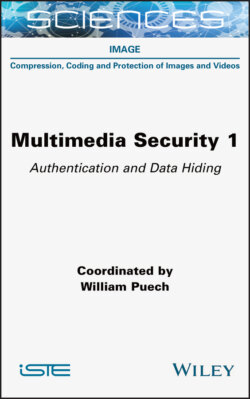Читать книгу Multimedia Security, Volume 1 - William Puech - Страница 45
1.5.3. Detecting the quantization matrix
ОглавлениеThe histogram of each of the 64 DCT coefficients makes it possible to determine the quantization step that corresponds to the associated value in the quantization matrix. Quantization has a very clear effect on the DCT coefficients histograms of an image, visible in Figure 1.11 before and after compression. DCT components generally follow Laplacian distribution (Clarke 1985; Wallace 1992), except for the first coefficient that represents the average of the block.
The JPEG quantization step transforms each DCT coefficient into an integer, multiple of the quantization value (Fridrich et al. 2001). These integer values lead to real values for each pixel during compression, which are then rounded off to integer values. Due to the second rounding, the DCT coefficients of the image are no longer integer, but show a narrow distribution around the quantization values, as shown in Figure 1.11. The quantization value in Figure 1.11 is q = 6, and so the uncompressed coefficients are centered around the values 0, 6, −6, 12, −12, and so on. Once a quantization model has been obtained for the DCT coefficients, forgery detection methods such as (Ye et al. 2007), look for inconsistencies in the histograms, after having established a stochastic model.
For example, Bianchi et al.’s method first estimates the quantization matrix used by the first JPEG compression, and then tries to model the frequencies of the histogram of each DCT coefficient (Bianchi et al. 2011).
